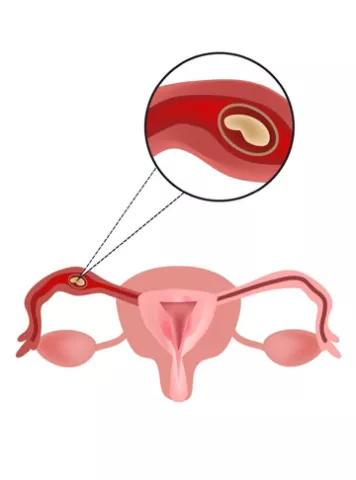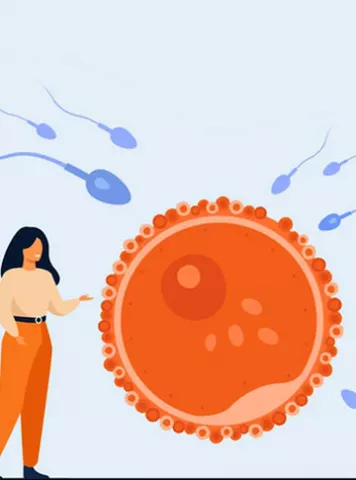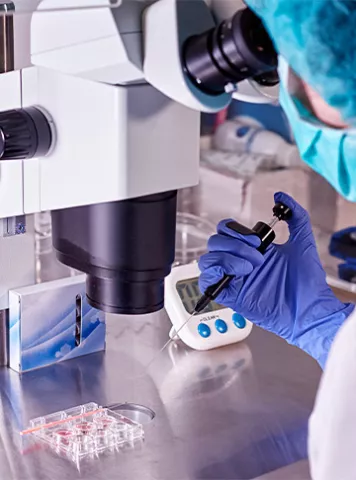Synopsis
Myths and Facts about boosting IVF success rate . Visit Indira IVF that provides 70% IVF treatment success rate in India. myths about ivf, facts about ivf
IVF Success Rate – Introduction
Whenever you are attempting to have a baby by in vitro fertilization (IVF), you will possibly discover many tips as to what you could do to enhance your possibilities for IVF success rate. We requested the IVF specialist in Mumbai Dr. Kanika Kalyani from our IVF center in Mumbai to separate the myths from the facts.
While you are spending an impressive sum of your time, money, as well as emotional equity into an IVF process, you must do all that you can to ensure it is a success. However, you do not wish to use up each hour of your time and your mind with an additional must-do that might lead you to feel guilty when you do not do it right. The IVF doctor in Mumbai Dr. Naveena Singh from our IVF clinic in Mumbai presents below the following myths and facts which can help improve your IVF success rate:
Myth-1: Selection of your fertility clinic is important.
Fact: Indeed, the clinic you decide to carry out the IVF treatment will significantly affect your IVF success. Therefore, we need to as well stress on the choice of IVF clinic, their technology, physician, as well as lab apparatus employed. Since every IVF center doesn’t get the same ivf success rate.
Let us discuss certain elements to consider while checking out the success rate of fertility centers:
- The training as well as the expertise of the IVF facility and employees.
- The live birth rate per IVF cycles.
- The proportion of patient’spregnant with multiples (twin babies, triplets or even more).
- The laboratory employed by the facility as well as the skills of their employees.
- The different types of patients allowed at the medical center, specifically how old they are and also fertility issue.
- Remember that certain treatment centers tend to be more ready to take patients with a reduced possibility of IVF success rate or perhaps they might specialize in certain treatment options explained the IVF doctor in Mumbai Dr. Kanika Kalyani from our IVF and infertility treatment center in Mumbai.
Why is the Indira IVF group of fertility clinics one of the best fertility centers in India?
Indira IVF founded by Dr. Ajay Murdia (a vocation spanning more than three decades), is today developed one of the best-known fertility chains in India from the modest origins with IVF facilities across the Indian subcontinent.
The Indira IVF group of fertility clinics provides you with first-class technological know-how including cutting-edge commercial infrastructure which caters for numerous infertility solutions such as IVF (In vitro fertilization), Laser Assisted Hatching, Cryopreservation, ICSI, IUI, Blastocyst culture and also transfer, Laparoscopy, Hysteroscopy including donor facilities.
It is a leader in offering inexpensive and yet reputable infertility curation to the masses. It is also armed with modern instruments along with a collection of well-known doctors.
Indira IVF began with a two-room health care clinic in 1988, and now is a renowned IVF service provider in the nation and beyond.
Indira IVF is offering the entire principal together with ancillary solutions linked to your cure under the same roof since they fully grasped the importance of a joint, accurate as well as well-oiled system for the patient’s childbearing ivf success. Across all its centers Indira IVF has provided IVF success rate to 37,000+ partners in the past seven years informed the IVF specialist in Mumbai Dr. Naveena Singh from our IVF clinic and test tube baby treatment center in Mumbai.
Myth-2: Emotional stress reduces IVF success rates.
Fact: According to research released in the March 2014 issue of Human Reproduction pursued 401 partners who were attempting to have a baby. Research workers assessed two stress biomarkers (alpha-amylase as well as cortisol) in ladies and then learned that individuals with higher levels of alpha-amylase were two times as going to be susceptible to infertility. According to the investigation, research workers feel emotional stress will lead to infertility, although it is not always an immediate cause; additional factors (such as lower sperm number and quality) may lead to it. We understand the number-one rationale individuals’ fall out of IVF medication is stress. Thus anything else you can perform to minimize emotional stress may help you stay in treatment for a longer time and also allow you to get expectant stated the IVF doctor in Mumbai Dr. Kanika Kalyani from the Indira IVF hospital in Mumbai.
Nevertheless much more comprehensive research on emotional stress as well as their rationale on IVF success rate in India is still required added further Dr. Kanika Kalyani.
Myth-3: Stay with bed rest after embryo transfer.
Fact: There’s no reason to set your daily life on a temporary halt after the embryo transfer, this concept is a real misconception. The fact is, research completed in Egypt discovered that ladies who were on bed rest for a day following a transfer experienced a reduced ivf success rate compared to individuals who went back to their normal routine. Another research discovered that even a brief length of bed rest (around ten minutes) is not beneficial either. We continuously inform our patients to go their home, enjoy a meal, and then go back to their regular routines recommended our IVF specialist in Mumbai Dr. Naveena Singh from our IVF clinic and fertility center in Mumbai.
Little or no bed rest is essential after IVF embryo transfer reassured Dr. Naveena Singh.
Myth-4: Doctor’s advice to be implemented before as well as after transfer
Fact: As soon as a lady has gone through IVF, it is essential to carry out the doctor’s recommendation in the event of safety measures. Aside from safety measures, a lady must leave behind all the fears behind. You have to be joyful and happy after IVF to experience the happy moments of having a baby concluded Dr. Naveena Singh from our IVF clinic and fertility center in Mumbai.
Myth-5: State-of-the-art techniques such as laser-assisted hatching and blastocyst culture enhance IVF success rate.
Fact: Based on recent scientific studies enhanced maternal age is just one of the choices that affected the opportunity for embryo hatching caused by the hardening of zona pellucida so that assisted hatching (AH) of the zona pellucida in assisted reproductive techniques might develop the implantation as well as maternity rates. This study revealed the advantage of laser-assisted hatching in enhancing conception rates in ladies of advanced age (35) who underwent IVF, or even ICSI programs reasoned the IVF specialist in Mumbai Dr. Kanika Kalyani from our IVF center in Mumbai.
Why does it make sense to select the right blastocysts?
Answer: Just about three from an average of twelve oocytes generated within twelve months by a lady owning an average menstrual period (an ovulation every month = twelve ovulations each year) are equipped for developing into a baby after fertilization. Also, 1 or 2 more oocytes may result in conception, yet, finally conclude in miscarriage. In principle, nearly all twelve oocytes can grow up to day 3 (such as those not resulting in having a baby), although they have never met a sperm. It is known as parthenogenesis can also be induced by an electrical pulse, or perhaps various other stimulation, e.g., pricking with a pipette replied the IVF doctor in Mumbai Dr. Naveena Singh from our IVF clinic in Mumbai.
It is merely then that the egg cells recognize the lack of the sperm. These kinds of oocytes usually exhibit a chromosomal abnormality (aneuploidy). These types of chromosomal issues might be identified by the help of the pre-implantation genetic diagnosis (evaluation of the egg’s polar body system). Regrettably, you can find an adverse association between rising age as well as the regularity of chromosomal irregularities, given that the oocytes are growing old. Suboptimal incubation problems or under optimum fertilization methods may be the reason why fertilized eggs, as well as the resultant embryos, might cease growing on days 2 to 3. It is just by picking the best blastocysts that one could help make a statement as to whether or not 2 to 3-day embryos possess the possibility of even further growth. Choosing the best blastocysts means that the inadequately growing blastocysts need to be diagnosed and also abandoned. By using this method in the IVF treatment of a young lady (25-30 years of age), maternity costs of around 80% might be accomplished. The chance of miscarriage is about 5-10%, which means a IVF treatment success rate of 70-75% included the IVF doctor in Mumbai Dr. Kanika Kalyani from our IVF and infertility treatment center in Mumbai.
Due to new observations into embryonic physiology, sophisticated culture media are designed allowing in vitro incubation around the blastocyst phase. These types of advanced media reduce the detrimental results on the viability of the embryos, which used to happen earlier in extended culture. While using this method, embryos displaying substantial developmental potency could be detected and then employed for transfer. Patients exhibiting some chromosomal issues may reap the benefits of blastocyst culture, too, as specific chromosomal problems usually lead to a slowdown of early embryonic growth throughout a continuous embryo culture. Blastocyst culture offers us with the chance to select a feasible embryo, therefore, enhancing the likelihood of delivering birth to a healthy baby.
Therefore blastocyst culture is the most suitable for ladies beyond 38 years of age. The threat for aneuploidy (irregular quantity of chromosomes) enhances in connection with woman’s age. Embryos with aneuploidy are likely to cease progression after day three. Increased implantation rates could be accomplished by transmitting 1 to 2 embryos at the blastocyst phase. Developing embryos in vitro to the blastocyst phase for assisted reproduction provides numerous benefits over the transfer of cleavage phase embryos.
These are (1) a higher implantation rate, (2) a reduction in the quantity of embryos transmitted, (3) the chance to choose more feasible embryos for transfer, (4) much better temporal synchronization between embryo as well as endometrium during embryo transfer, as well as (5) more time in culture that gives the chance to carry out preimplantation genetic diagnosis (PGD) whenever these are indicated.
Current improvements in our comprehension of the vibrant physiology of early human embryos have resulted in the progression of culture systems currently efficient at producing feasible blastocysts with better consistency. While many techniques include two different media employed consequently[6][7], some others use just one medium[8][9]explained the IVF specialist in Mumbai Dr. Naveena Singh from our IVF clinic and test tube baby treatment center in Mumbai.
Myth-6: For patients going through self-egg IVF success, frozen embryo transfer can give increased possibilities of ivf success rate when compared with fresh embryo transfer
Fact: Indeed, frozen embryo transfer provides certain specific advantages when compared with fresh embryo transfer as given by fertility doctors in Mumbai:
- Frozen embryos offer patients with additional cycle possibilities:
Getting frozen embryos permits you added chances for results from a particular egg retrieval. When your new transfer is ineffective, frozen embryos might offer the opportunity of attempting once again without needing to have ovarian stimulation drugs to get one more egg retrieval. The growth and development of vitrification technology have resulted in excellent results, with more and more patients attaining live birth from one induced cycle.
- Frozen embryo transfer (FET) rounds are less expensive as compared to fresh cycles:
Following a new IVF treatment process, succeeding FET rounds are less costly for patients. Costs of both medicine, as well as cure, are lower than in a new cycle. Expenses of treatment are lowered as you can find lesser supervising trips, and also it is not necessary for egg retrieval, insemination, or even embryo culture.
- A FET process is simple.
For many of our patients, FET rounds are more straightforward since you do not have surgical treatment (the egg retrieval) or even anesthesia. At the beginning of your FET process, estrogen shots are employed to set up the uterine inner lining as they are given just once every three days. Dailyintramuscular progesterone is included later on in the process.
- Freezing all of the embryos for potential FET(s) overcomes the adverse impact that raised progesterone quantities have on conception results.
Current studies have demonstrated that when a woman’s progesterone level increases all through the ovarian stimulation part of her treatment process, the endometrium (or even uterine inner lining) is much less responsive to embryo implantation, and also conception levels are lowered. When progesterone increases above a significant limit, your physician might suggest that you deep freeze all of the available embryos instead of continuing with the new transfer. A FET may then be done in a process without stimulus drugs. Information from medical studies has shown that transmitting the embryo(s) through FET is related to an increased possibility of ivf success rate when compared with a fresh transfer in the environment of a heightened progesterone stage. Ladies who get a ‘freeze-all’ process encounter the identical outstanding live birth rates just as do ladies who get a fresh transfer (together with regular progesterone levels) before their FET.
- FET enables patients to lessen their chance of ovarian hyper stimulation disorder when sustaining excellent ivf success rates.
We carefully observe patients for ovarian hyper stimulation syndrome (OHSS) and also use stimulus restrictions made to stop this from happening. Hence, OHSS is seldom seen in our technique, occurring within one percent of patients. Nevertheless, in circumstances wherein a doctor recognizes possible warning signals that a lady is at increased threat for OHSS (higher estrogen ranges as well as follicle figures, sudden weight gain, fluids in the pelvis, and so on). She or he might suggest freezing all of the available embryos instead of continuing with a fresh transfer since conception might enhance OHSS risk. Embryo(s) may then securely be transmitted via FET. Just like freeze-all rounds for increased progesterone levels, conception rates stay favorable.
- Frozen embryos permit genetic testing.
For partners with a threat of passing particular hereditary problems onto Double Helixtheir kids, we could check the embryos for specific genetic mutations. It is known as a preimplantation genetic diagnosis (PGD). After the doctor retrieves the eggs, so they are fertilized, the embryologist is going to biopsy each suitable embryo on day five or even six of growth. The embryologist can deep freeze the embryos when waiting for outcomes from the biopsied cells. The doctor may then transmit merely embryo(s) in which tests implies the genetic mutation (and also communicating medical problem) mentioned is missing.
Along with tests for hereditary mutations (PGD), embryo freezing has allowed for preimplantation genetic screening (PGS). PGS seeks out irregularities in chromosome amount, like trisomy twenty-one, which in turn causes Down’s syndrome, many other people which are prone to lead to implantation malfunction or even miscarriage. Most likely applicants with these tests consist of patients with common conception loss and also mature ladies that are at increased threat for chromosomal irregularities. In accordingly chosen applicants, these tests can lead to enhanced live birth rates.
- Freezing embryos provide you with the possibility to develop your family at a later time:
Vitrified embryos preserve reproductive possible significantly in the future, offering our patients time for them to grow a family. Although ladies can undergo FET at SGF until the age of 51, FET may hang the proverbial biological clock, because embryos thawed for FET sustain the reproductive potency connected with the age of the egg during the time it was fertilized. For instance: when a lady has her first baby by the age of 38 through IVF process. Also, has outstanding embryos cryopreserved, she will keep coming back to get embryo(s) transmitted through FET, at any given time whenever getting pregnant with her eggs will elsewhere be unlikely responded the IVF doctor in Mumbai Dr. Kanika Kalyani from our IVF treatment cost in Mumbai.
If you want to know more about ivf success rate, tips for ivf success, in-vitro fertilization success rate, ivf treatment success rate and frozen embryos at the Indira IVF group of fertility clinics or to plan a scheduled appointment, you need to talk with one of our IVF doctors in Mumbai at 18003092323.
Comments
Articles
2023


Guide to infertility treatments IVF
एक्टोपिक प्रेगनेंसी के लक्षण, कारण और इलाज
प्रेगनेंसी की खबर महिला को का�...
2023


IVF Guide to infertility treatments
टेस्ट ट्यूब बेबी का खर्च कितना आता है (What is the test tube baby cost in hindi)
पिछले कुछ वर्षों में टेस्ट ट्�...
2023


What Causes High Estrogen in Women
Estrogen is a very important hormone in a female’s body. It is especially ne...
2023


How early can a pregnancy be detected in IVF?
The happy news of pregnancy arrives after the successful completion of the fer...
2022


Guide to infertility treatments IVF
थाइरायड असंतुलन के कारण हो सकती है निःसंतानता, आईवीएफ से कैसे हो सकता है।
पिछले कुछ वर्षों में थायराइड �...
2022


पुरूष निःसंतानता का एक कारण वेरिकोसिल आधुनिक तकनीकों से संभव है पिता बनना
पुरूष निःसंतानता शब्द कुछ सा�...


गर्भधारण के लिए कितनी होनी चाहिए शुक्राणुओं की संख्या
निःसंतानता एक ऐसी समस्या बनत�...
2022


क्या है आईवीएफ डिटेल में जानिए, आईवीएफ में कैसे होता है गर्भधारण
समय के साथ हमारी प्राथमिकताओ�...
Tools to help you plan better
Get quick understanding of your fertility cycle and accordingly make a schedule to track it

















